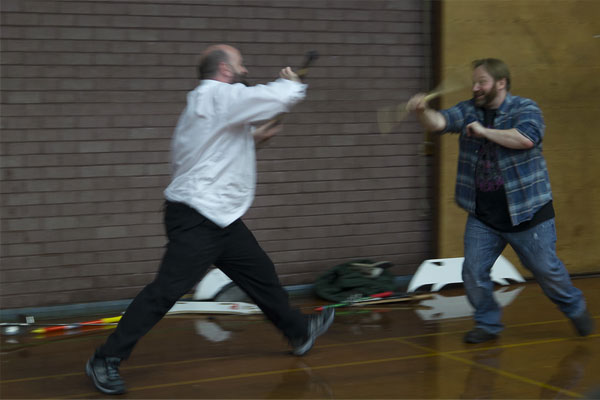Martial Arts Near Me
Bartitsu
Bartitsu is a highly intriguing and lesser-known martial art that originated in late 19th-century England. Combining elements of various self-defense disciplines, Bartitsu encompasses a unique blend of Asian and European fighting styles, making it a captivating fusion of cultures and techniques. Its history, techniques, and current status make it a fascinating martial art with a dedicated following.
Bartitsu was developed by Edward William Barton-Wright, a British engineer and self-defense enthusiast who sought to create a comprehensive martial art that could be used for both armed and unarmed combat. Inspired by his experiences in Japan and elsewhere, Barton-Wright incorporated elements of jujitsu, Swiss cane fighting, French kickboxing, and even British boxing to create a well-rounded system that could be adapted to various combat situations.
In 1899, Barton-Wright introduced Bartitsu to the public through a series of articles in Pearson's Magazine, sparking interest and intrigue among those seeking self-defense instruction. He founded the Bartitsu Club in London, which quickly gained popularity and attracted individuals from different social backgrounds. The club offered a range of classes, including self-defense, boxing, stick fighting, and even the use of improvised weapons. It became known as the "School of Antagonistics."

Bartitsu's techniques are as diverse as its influences. The martial art encompasses both armed and unarmed techniques, combining strikes, locks, throws, and even defense against multiple attackers. The focus on practical self-defense is evident, with an emphasis on efficiency and adaptability. Bartitsu techniques often utilize leverage and opponent's momentum to neutralize attacks, making it suitable for individuals of different strengths and sizes.
One of Bartitsu's most distinctive features is the use of the walking stick as both a defensive and offensive weapon. Barton-Wright believed that the walking stick offered an advantage in self-defense situations, as it was a common accessory that could be easily carried everywhere. Metal-headed, heavier sticks were used for strikes, while lighter, flexible canes could deliver fast and precise attacks. The use of a walking stick as a tool for self-defense set Bartitsu apart from other martial arts and contributed to its allure.
Despite its initial popularity, the Bartitsu Club and the martial art itself faced challenges that led to its decline. Barton-Wright's departure from London in 1902, coupled with financial difficulties, led to the closure of the club a few years later. Bartitsu's unique combination of styles and focus on practical self-defense did not easily fit into the traditional martial arts landscape of the time, which influenced its limited spread and recognition compared to other martial arts.
For many years, Bartitsu remained relatively obscure and forgotten. It was not until the early 21st century that renewed interest in the art emerged. This revival was fueled by enthusiasts of martial arts history, who sought to piece together and preserve the knowledge of Bartitsu. Books, articles, and workshops began to emerge, shedding light on the forgotten techniques and principles of Bartitsu, igniting the curiosity of a new generation of martial artists.
Today, Bartitsu continues to slowly regain its place within the martial arts community. While not as widely practiced as more mainstream martial arts, its uniqueness and historical significance make it an attractive pursuit for individuals interested in self-defense and martial arts history. Academies and clubs dedicated to Bartitsu have begun to emerge in various parts of the world, offering training opportunities and a community for enthusiasts.
Bartitsu's value extends beyond just its physical techniques. Its historical importance lies in the blending of different cultural martial arts styles, highlighting the interconnectedness of various fighting systems. Additionally, Bartitsu serves as a testament to the ingenuity and creativity of Barton-Wright, who recognized the need for a versatile and practical martial art.
Bartitsu is an extraordinary martial art that emerged in late 19th-century England. Developed by Edward William Barton-Wright, Bartitsu combined elements of jujitsu, Swiss cane fighting, French kickboxing, and British boxing to create a comprehensive and adaptable self-defense system. While its popularity declined in the early 20th century, Bartitsu has experienced a revival in recent years, attracting enthusiasts interested in martial arts history and practical self-defense. As a unique fusion of cultures and techniques, Bartitsu continues to intrigue and captivate those seeking to explore the diverse world of martial arts